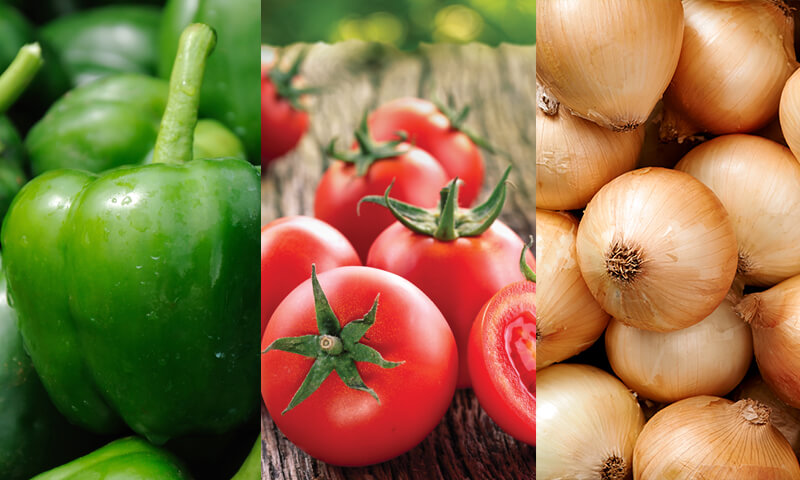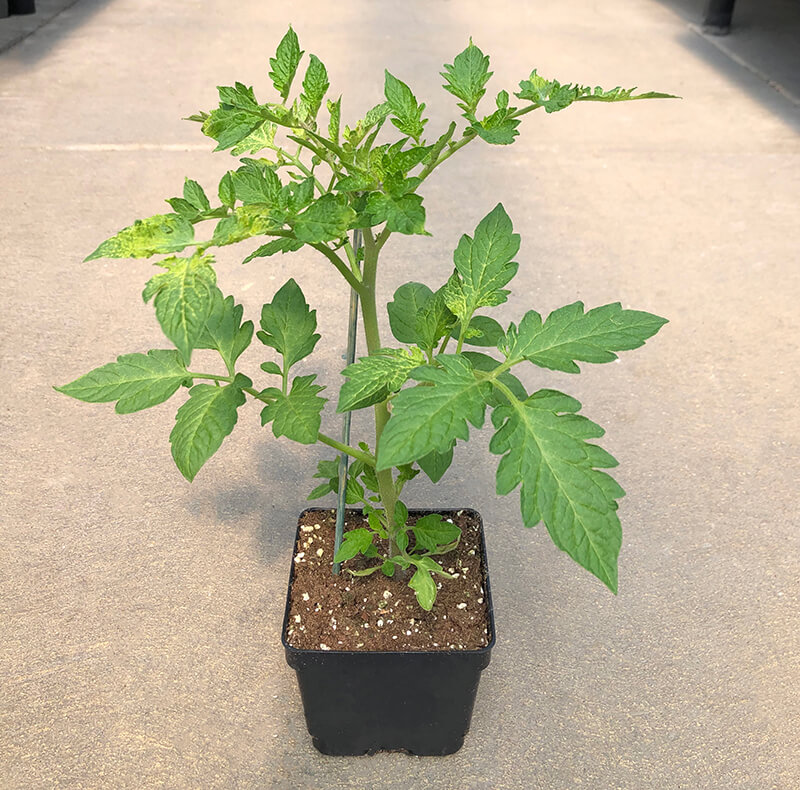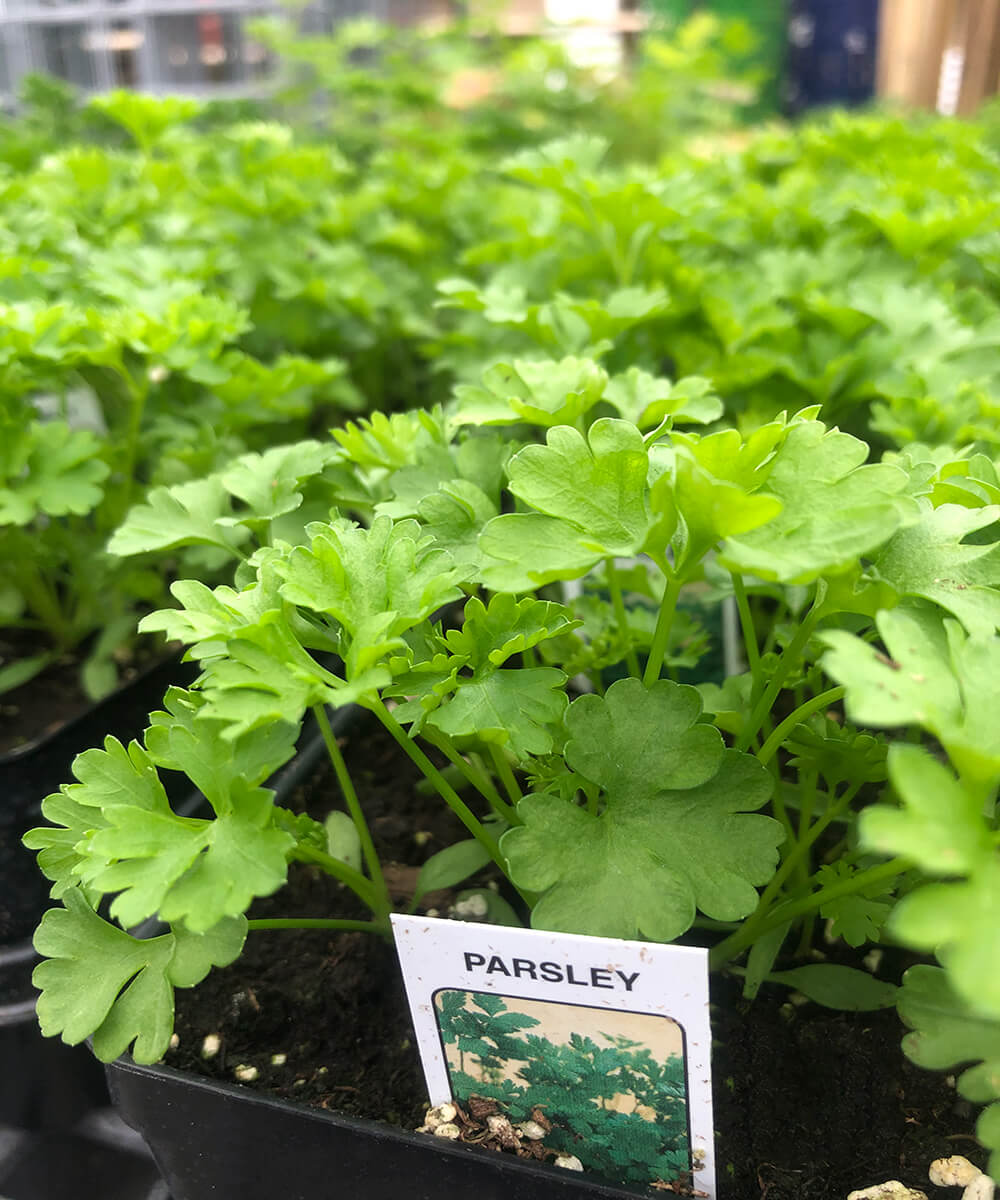Grow Your Own Fresh Ingredients for Tomato Sauce

Grow Your Own Tomato Sauce Garden
As soon as you open the door to growing your own food, you meet a world of endless culinary possibilities. Not only does growing your own food help you stay healthy and save you money, but homegrown ingredients just taste better in cooking! At least…we like to think so. That’s why our Home & Garden team recommends that everyone tries to start their own fruit, vegetable, & herb gardens this season. Even gardening beginners will find that with just a little guidance and effort, many of your favorite produce staples are just a quick planting away. So, when you start to consider recipes that can incorporate your homegrown produce, start simple. Grow your own fresh ingredients for tomato sauce, right from home!
Assemble Your Homegrown Ingredients
First, consider your favorite tomato sauce. What flavors do you enjoy? What ingredients stand out to you most? Generally, you can’t go wrong with a classic, sweet sauce, though sometimes you may prefer a recipe that packs a powerful punch! Pick from a range of common herbs for a more sophisticated taste, or experiment with some heat and choose hot peppers. Whatever your taste preference may be, you can easily grow all of these ingredients right from home.
For first timers, we’ll discuss how to grow your own tomato sauce garden with:
- Tomatoes
- Peppers
- Onions
- Basil
- Cilantro
- Garlic
- Oregano
- Parsley
Tomatoes
Let’s start with the main ingredient! When you take a trip to our greenhouses, you find a number of tomato plant options. Some plants, like Beefsteak and Heirloom, produce tomatoes that serve the best purpose when sliced for salads and sandwiches. Other plants, such as Cherry and Grape, grow snackable varieties small enough to pop right in your mouth. For tomato sauce, we recommend that you choose a Roma tomato plant. Although smaller in size, egg-shaped Roma (Plum) tomatoes offer a more bright red, thicker flesh than other varieties. They also contain fewer seeds and less juices, which make them ideal when creating a delightful paste needed for your tomato sauce.
Care for your Roma plant just as you would most tomato varieties. Be sure to wait until after the last frost to plant, as starter plants will not survive a cold snap. First, find a spot in garden with rich, well-drained soil that has a pH level of around 6.0.-7.0. Your tomato plants need 6-12 hours of sunlight daily, though when transplanting we suggest that you wait for a cloudy day. Otherwise, transplant in the early morning or at sunset. Water your plants just before planting to help the root ball stay intact. Space staked or trellised tomatoes 2 feet apart in rows 3 feet apart. Leave 3 feet between caged tomatoes and 4 feet for plants to grow unsupported.
Sow your plants deeply in the soil to encourage root formation along the buried stem. Add a mulch to help retain moisture in the soil, reduce weeds, and keep your tomato fruit clean. However, never allow the mulch to touch the stem of the plant; keep mulch 3 to 4 inches away from the stem. Once planted, water thoroughly, and remember that tomatoes need a continuous and uniform supply of water. Too much water causes root rot, while too little will halt fruit production. Simply avoid letting the soil dry out, and water early in the day. Always water the ground rather than the foliage. Lastly, if you want an abundant harvest, apply a 10-10-10 tomato food fertilizer at the time of transplanting. We recommend Tomato Tone from Espoma Organic.
When your Roma tomatoes reach maturity, carefully harvest with a sharp knife and store in the fridge until it’s time to make your sauce.

Peppers
Next on your list of ingredients, pick the perfect pepper! We offer a wide variety of pepper plants in our greenhouses that produce fruit ranging from mild and sweet, to super spicy. Choose your desired level of heat and get to growing! Like tomatoes, starter plants grow just as well in raised beds and containers as they do in the ground. Follow nearly all the same growing instructions as you would with tomatoes, including spacing, sunlight, and watering requirements. You can even support each of your pepper plants with a stake or trellis. When it comes to harvesting, take note of which type of pepper you have, as some take longer to mature than others. For example, sweet peppers may mature in as little as 60 days, while hot peppers can take upwards of around 150.
Onions
If you like flavor, onions should definitely be on your list of essential ingredients for your tomato sauce. But first, you need to know a little more about onion sets. There are 2 variations of onion sets: short day (Fall), which grow best in southern United States, and long day (Spring), which thrive in the North. For our area, you will want to plant long day onions. They require a spot that receives roughly 14-16 hours of sunlight in order to thrive, and need great soil drainage. plant them roughly an inch deep in the soil and space them out 4 inches from each other. Water regularly, and mulch your beds to keep weeds from competing for the water. Of course, they can also be grown in containers and raised beds.
Within a few weeks of planting your sets, you can harvest full grown onions for immediate consumption or use in the kitchen. In this case, you’ll have onions for your tomato sauce in no time! To harvest, simply pick when the bulb is large and its green color begins to brown and fall apart. Carefully pull them from the ground. Don’t forget, onions need to be cured with their tops still attached before consumption. Allow your onions to dry in the shade outside (as long as no rain is expected) or inside for about 7-11 days. After this period, cut off the tops and roots and store them inside in a cool, dry, dark place until you are ready to make your tomato sauce.
Herbs Galore
Now that you have your main vegetable ingredients, choose your favorite herbs for the perfect seasoning to your tomato sauce! The great thing about harvesting herbs is that in most cases, all it takes is simply cutting off a portion of the plant to use in your cooking. Once your plant has adequate enough growth, take a pair of garden scissors and snip a small piece of the plant. Try the previously mentioned combination of:
Basil – First, choose from the many varieties of basil available, each with their own flavor, fragrance, and texture. Plant starter plants in full to partial sun in soil with great drainage. Water regularly.
Cilantro – Provide plenty of water and a mostly sunny spot with well-drained soil. Space the plants about 6 inches apart. Use sparingly in your recipe as to not overpower the flavor of your tomato sauce.
Garlic – This plant will grow to about 2 feet in height and needs a spot in your garden that gets full sun. When your flowers and leaves die back, remove the bulb from the soil and hang it out to dry in an airy space. If you like Italian cooking, use plenty of minced garlic in your sauce!
Oregano – Another full sun-loving herb, pinch or cut the leaves during the growing season as needed. You can either dry the leaves or use them fresh.
Parsley (Italian/Flat) – Pick over the entire plant regularly to encourage fresh new growth! The leaves can be used whole or chopped, and they can be dried and stored in sealed jars or frozen.

Enjoy the Perfect Homegrown Tomato Sauce
Once you’ve planted, harvested, and assembled your fresh ingredients, you’re ready to get cooking! By the end of your experience, you’ll see just how easy it is to grow your own produce from your backyard. Whether you sow your starter plants directly into the ground or choose a raised bed or container, fresh veggies and herbs are right at your fingertips. So, head to our Home & Garden Stores for everything you need to grow your own fresh ingredients for tomato sauce!
